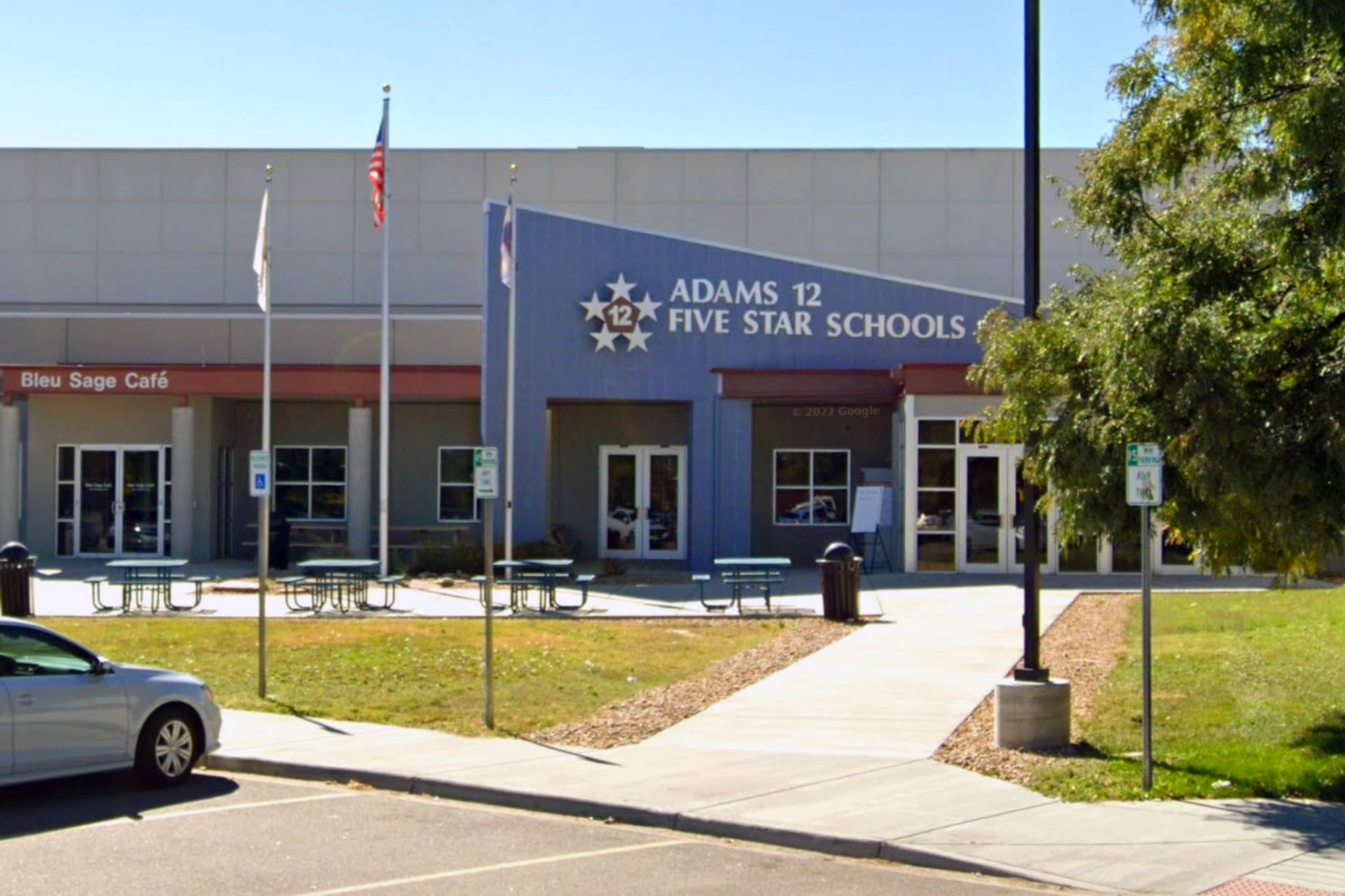Teachers in at least two Adams 12 schools could earn higher pay in a pilot program – through district-provided training and taking on new school responsibilities – instead of by completing graduate credits, the more traditional route.
Removing pay incentives for college credits is rare, but not unheard of. About 90% of districts pay teachers more for earning graduate degrees, according to one survey of large districts.
“You don’t have to go out and spend $10,000 on a graduate degree,” said Dave Lockley, president of the teachers union in Adams 12. “We believe in continuing development. We don’t know that graduate credits are the best way.”
The pilot, designed by a team of teachers, union leaders, and district leaders, would likely take place at Thornton Elementary School and Thornton Middle School, two schools that have struggled. One goal of the pilot would be to incentivize more teachers to work in and stay at the low-performing schools with high percentages of high-risk students. The pilot also incentivizes teachers to collaborate to see if it helps with raising student achievement.
The team that designed the salary pilot had considered it for years. They moved forward with plans this year after the district committed $4.5 million to try it out. If approved, it is expected to start this fall and last three to four years, but the final agreement could change those details.
As teachers have been informed, there has been some pushback.
Lockley and district leaders said teachers’ main concerns are about what new responsibilities the higher pay requires, whether that money could do more good for more schools in another way, and whether the changes devalue graduate degrees some teachers already earned.
Union and district leaders are discussing the feedback to possibly adjust the plan or decide whether to move forward with it. If they agree in negotiations to the pilot in the next couple of weeks, the school board and the full union membership will have to vote to approve it.
Myla Shepherd, chief human resources officer for Adams 12, said the team that designed the pilot recommended Thornton Elementary and Middle schools for the pilot after the district ranked all schools using five criteria the subcommittee chose, including a three-year teacher turnover average, mobility of students, and how many students qualify for subsidized lunches.
Thornton Elementary has a three-year teacher turnover rate of 38.8%. At Thornton Middle School, that rate is 33.2%. Both schools have more than 40% of their students identified as English learners, and more than 83% qualify for subsidized meals.
But, Shepherd said, the district is open to running the pilot with more schools if possible.
None of the teachers at the pilot schools would see a decrease in their salary. Most will see a raise.
The district estimates the program will cost about $500,000 to $600,000 per school, at the start, Shepherd said, because of those salary increases, and because raises might be more accessible tied to professional development instead of college credit.
“Over time that would decrease as people earn more and turn over less,” Shepherd said the district estimates.
Ultimately, part of the goal is for schools to build a staff that’s a mix of new teachers, intermediate career teachers, and some veterans collaborating and helping each other.
“That’s when a school is at its best,” Lockley said.
Salary raises will also be flattened, so that teachers can reach the maximum earlier in their careers, even though the maximum would be a lower salary than the current schedule.
But Lockley said that under Adams 12′s current salary plan, only one teacher in the district is currently at the maximum, and for most teachers, it’s unattainable. Allowing more teachers to reach a maximum salary earlier can increase their lifetime earnings, even if that maximum is smaller, he said.
Typically, Lockley said, it is white men who are more likely to climb the salary ladder in traditional schedules, because they’re more likely to have money and time to earn higher degrees.
“It just always seemed baffling to me that we force teachers to go into debt in order to see a decent pay raise,” Lockley said. “Some of our teachers can’t afford the time or the money to go get a master’s degree. My hope would be that the things we learned from this pilot, we could use to help fix these long-term inequities.”
Researchers say studies have shown that many master’s degrees earned by teachers don’t lead to better student outcomes. However, there are cases where they do, such as a math teacher in a middle or high school, who earns a master’s degree in math, or special education teachers with specialized degrees for their field.
Linda Darling-Hammond, president of the Learning Policy Institute and a Stanford University professor, said that there are downfalls with district-provided training, too. They must be well-designed and closely tied to the work teachers do.
“And you can end up with the same inequities if they have to find their own time,” she said.
But the idea of incentivizing a system where veteran teachers would mentor and work with newer teachers can be promising, she said.
“There’s a lot to be said positively about the idea of having veteran teachers mentor younger educators,” Darling-Hammond said. “That does increase retention and effectiveness for the beginner teachers if you do it right.”
Heather Peske, president of the National Council on Teacher Quality, said that districts typically aren’t using money strategically when they pay more for graduate degrees that usually aren’t tied to better student outcomes.
“We need to pay teachers more for working where they’re most needed,” Peske said.
One measure that wasn’t considered by the group to choose the pilot schools, was a school’s state performance rating. Still, one of the two schools recommended, Thornton Middle School, is one of six in the district with a low rating that landed on the state’s watchlist for persistently low student test scores and other achievement deficits.
Ideally, Lockley said, he’d like to see a school improve performance in ways that show in better state ratings.
The subcommittee is still considering how to measure success, depending on the pilot’s length. Some version of student success, and teacher retention will be a part of it, Shepherd said.
“We’re trying something different to really honor and recognize the work of educators,” Shepherd said. “It will allow for attracting and retaining people in those challenging environments. And improved student achievement.”
Yesenia Robles is a reporter for Chalkbeat Colorado covering K-12 school districts and multilingual education. Contact Yesenia at yrobles@chalkbeat.org.






